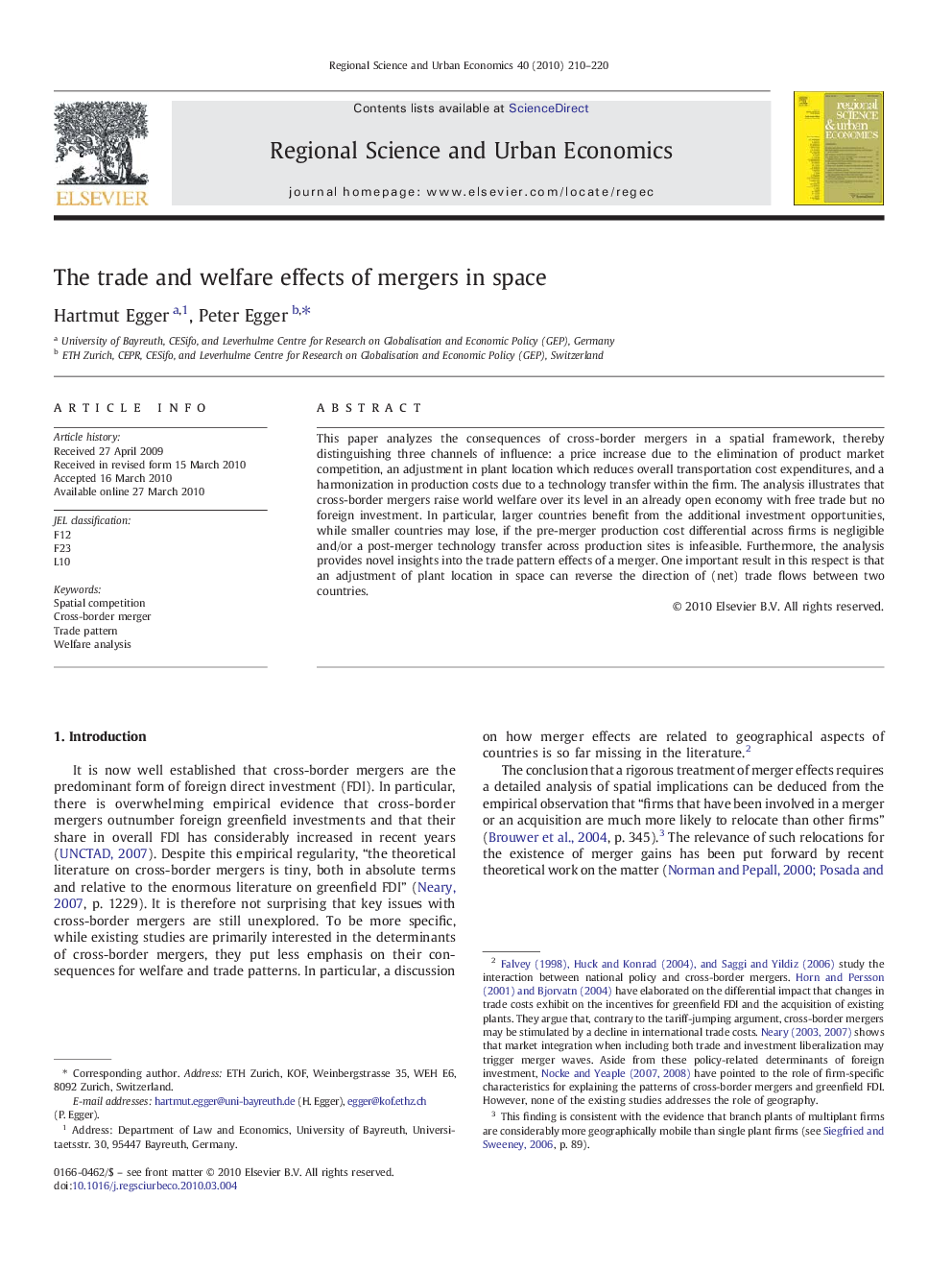| Article ID | Journal | Published Year | Pages | File Type |
|---|---|---|---|---|
| 984054 | Regional Science and Urban Economics | 2010 | 11 Pages |
This paper analyzes the consequences of cross-border mergers in a spatial framework, thereby distinguishing three channels of influence: a price increase due to the elimination of product market competition, an adjustment in plant location which reduces overall transportation cost expenditures, and a harmonization in production costs due to a technology transfer within the firm. The analysis illustrates that cross-border mergers raise world welfare over its level in an already open economy with free trade but no foreign investment. In particular, larger countries benefit from the additional investment opportunities, while smaller countries may lose, if the pre-merger production cost differential across firms is negligible and/or a post-merger technology transfer across production sites is infeasible. Furthermore, the analysis provides novel insights into the trade pattern effects of a merger. One important result in this respect is that an adjustment of plant location in space can reverse the direction of (net) trade flows between two countries.
